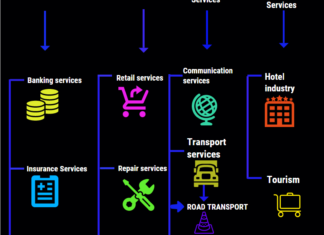-
Obrien Rooney posted an update 1 year, 6 months ago
What Does a Cybersecurity Service Provider Do?
A Cybersecurity Service Provider is a third-party company that helps organizations safeguard their data from cyber threats. They also aid companies in developing strategies to protect themselves from future cyber attacks.
You must first be aware of the requirements of your business before deciding on the best cybersecurity provider. This will prevent you from joining with a service provider that is not able to satisfy your long-term needs.
Security Assessment
Security assessment is an essential step to safeguard your business from cyber-attacks. It involves testing your systems and networks to identify their vulnerabilities, and putting together an action plan to mitigate these vulnerabilities based on your budget, resources and timeframe. The process of assessing security can also help you identify new threats and block them from gaining advantage over your business.
It is crucial to keep in mind that no network or system is completely secure. Hackers can find a way to attack your system even with the latest software and hardware. It is crucial to check your systems and network for vulnerabilities regularly, so you can patch them before a malicious attacker does.
A reputable cybersecurity service provider will have the expertise and experience to conduct an assessment of security risks for your business. They can offer you a complete report that contains detailed information about your networks and systems and the results of your penetration tests and suggestions for addressing any issues. Additionally, they will help you establish a strong cybersecurity framework that will keep your company safe from threats and abide by regulatory requirements.
Be sure to examine the cost and service levels of any cybersecurity service provider you are considering to make sure they’re suitable for your company. They will be able to assist you decide which services are most important for your business and assist you establish a budget. They should also be able to give you a continuous view of your security posture through security ratings that include multiple factors.
To guard themselves against cyberattacks, healthcare organizations need to periodically review their systems for technology and data. This involves assessing whether the methods of storing and transferring PHI are secure. This includes servers, databases connected medical equipment, and mobile devices. It is important to establish if these systems comply with HIPAA regulations. Regular evaluations can also aid in staying up to date with the latest standards in the industry and best practices for cybersecurity.
In addition to assessing your systems and network as well, it is important to assess your business processes and priorities. This will include your plans for growth and expansion, your data and technology usage, and your business processes.
Risk Assessment
A risk assessment is the process of evaluating hazards to determine if they are managed. This aids an organization in making decisions regarding the controls they should implement and how much time and money they need to invest. The process should be reviewed regularly to make sure that it is still relevant.
A risk assessment is a complicated procedure However, the benefits are evident. It can assist an organization in identifying weaknesses and threats to its production infrastructure as well as data assets. It can also be used to determine whether an organization is in compliance with security-related laws, regulations, and standards. Risk assessments can be both quantitative or qualitative, however they must be ranked in terms of the likelihood and impact. It should also consider the criticality of an asset to the company and must evaluate the cost of countermeasures.
The first step in assessing risk is to examine your current technology and data systems and processes. This includes looking at what applications are currently in use and where you see your business going in the next five to 10 years. This will help you determine what you require from your cybersecurity provider.
It is important to look for a cybersecurity provider that offers a diverse array of services. This will allow them to meet your requirements as your business processes or priorities shift. It is important to choose an organization that has multiple certifications and partnerships. This shows their commitment to using the latest technology and methods.
Smaller businesses are particularly vulnerable to cyberattacks since they don’t have the resources to protect their data. A single cyberattack could result in a substantial loss of revenue, fines, unhappy customers and reputational harm. A Cybersecurity Service Provider will assist you in avoiding these costly cyberattacks by safeguarding your network.
A CSSP will help you create and implement a cybersecurity plan that is tailored specifically to your needs. They can help you prevent the occurrence of cyberattacks such as regular backups, multi-factor authentication and other security measures to safeguard your information from cybercriminals. They can help with incident response planning and are always updated on the kinds of cyberattacks that target their clients.
Incident Response
If a cyberattack takes place and you are unable to respond quickly, you need to act to minimize damage. A plan for responding to an incident is essential to reducing recovery costs and time.
The first step in an effective response is to prepare for attacks by reviewing the current security measures and policies. This involves conducting an assessment of risk to identify existing vulnerabilities and prioritizing assets for protection. It also involves preparing plans for communication to inform security members, stakeholders authorities, and customers of an incident and the steps that are required to take.
During the identification stage, your cybersecurity service provider will be looking for suspicious activity that might be a sign that an incident is happening. This includes monitoring the logs of your system, error messages, intrusion detection tools, and firewalls for suspicious activity. Once an incident is detected the teams will identify the nature of the attack, focusing on its origin and purpose. They will also gather any evidence of the attack and save it for future in-depth analyses.
Once your team has identified the issue, they will identify the infected system and remove the threat. They will also attempt to restore any affected systems and data. They will also conduct a post-incident activities to determine the lessons learned.
It is critical that everyone in the company, not just IT personnel, understand and have access to your incident response plan. This helps ensure that all parties are on the same page and can respond to an incident in a timely and efficient manner.
In addition to IT personnel Your team should also include representatives from departments that deal with customers (such as support and sales) and who are able to notify customers and authorities in the event of a need. Depending on your organization’s legal and regulatory requirements privacy experts, privacy experts, as well as business decision makers may also be required to participate.
A well-documented procedure for incident response can speed up forensic analyses and prevent unnecessary delays when executing your disaster recovery plan or business continuity plan. It can also lessen the impact of an incident and reduce the chance of it leading to a regulatory or breach of compliance. To ensure that your incident response procedure is working, you should test it frequently using various threat scenarios and by bringing experts from outside to fill in gaps in your knowledge.
Training
Cybersecurity service providers must be highly-trained to protect against and respond effectively to various cyber-related threats. CSSPs must implement policies that will prevent cyberattacks in the beginning, as well as provide technical mitigation strategies.
The Department of Defense offers a range of certification and training options for cybersecurity service providers. Training for CSSPs is available at all levels of the organization, from individual employees to the top management. This includes courses that concentrate on the principles of information assurance as well as incident response and cybersecurity leadership.
A reputable cybersecurity provider will be able provide a detailed review of your business and work environment. The company can also identify any vulnerabilities and offer recommendations for improvement. This will assist you in avoiding costly security breaches and protect your customers’ personal information.
If you require cybersecurity solutions for your medium or small business, the service provider will ensure that you are in compliance with all industry regulations and compliance requirements. The services you get will vary depending on your needs but may include malware protection, threat intelligence analysis and vulnerability scanning. Another alternative is a managed security service provider, who will monitor and manage both your network and endpoints from a 24 hour operation center.
The DoD Cybersecurity Service Provider Program provides a variety of specific certifications for job roles. They include those for analysts and infrastructure support as well as auditors, incident responders and incident responders. Each role requires a specific third-party certificate and additional DoD-specific training. cryptocurrency payment processing are offered at a variety of boot training camps that specialize in a particular discipline.
In addition, the training programs for these professionals are designed to be interactive and engaging. These courses will equip students with the skills they need to succeed in DoD environments of information assurance. In reality, more employee training can reduce the possibility of cyber attacks by as much as 70 percent.
In addition to its training programs, the DoD also conducts cyber and physical security exercises with industry and government partners. These exercises provide a useful and practical method for stakeholders to assess their plans and capabilities in a an actual and challenging environment. These exercises will also help participants to discover best practices and lessons learned.
Home Activity












